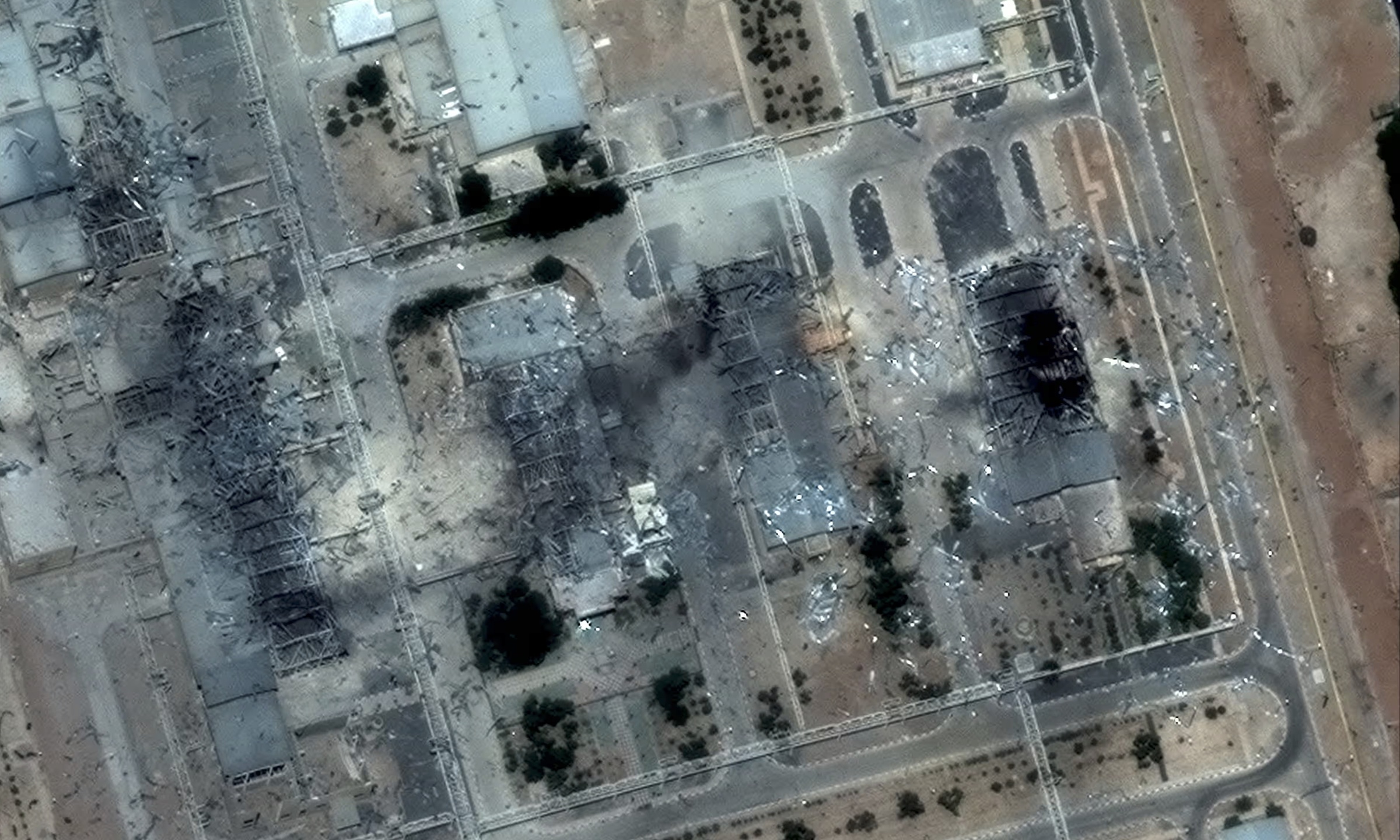CNN reported on 24/6, citing two sources familiar with the matter, that a classified report from the Defense Intelligence Agency (DIA) concluded that key components of Iran's nuclear program, including uranium enrichment centrifuges, are likely to be restarted within months.
The report also indicated that much of Iran's highly enriched uranium, the material that can be used to make nuclear weapons, was moved before the attacks and is being stored at other undisclosed nuclear sites.
 |
Satellite image shows damage at the Isfahan nuclear technology center, Iran, on 22/6, following the US airstrikes. Photo: Maxar |
Satellite image shows damage at the Isfahan nuclear technology center, Iran, on 22/6, following the US airstrikes. Photo: Maxar
The DIA's findings, based on a preliminary battlefield damage assessment conducted by US Central Command (CENTCOM), suggest President Donald Trump may have overstated his claim that the US strikes "obliterated" key Iranian nuclear sites.
Fordow is Iran's most heavily fortified nuclear site, with uranium enrichment facilities buried deep under the Zagros Mountains.
Assessing the damage at the Fordow, Isfahan, and Natanz nuclear sites is a complex task, and the DIA is not the only agency assigned to it. One source said the assessment isn't universally accepted and has generated considerable disagreement.
White House Press Secretary Karoline Leavitt dismissed the leaked intelligence assessment as an attempt to "discredit President Trump and smear the pilots who carried out a flawless mission to dismantle Iran's nuclear program".
However, Vice President JD Vance acknowledged on 22/6 that the US does not know the location of Iran's highly enriched uranium stockpile. "We will be working in the weeks ahead to ensure we address that fuel," he said.
Rafael, Director General of the International Atomic Energy Agency (IAEA), stated on 23/6 that the IAEA no longer has the ability to track Iran's 400 kg stockpile of uranium enriched to 60%.
The Guardian revealed last week that senior Pentagon officials were informed early in Mr. Trump's second term that the GBU-57 bunker-buster bomb could not completely destroy the Fordow nuclear facility.
In a January meeting, officials at the Pentagon's Defense Threat Reduction Agency, which developed the GBU-57, reportedly advised that the bomb would not penetrate deep enough and only a tactical nuclear weapon could obliterate Fordow.
 |
Large craters appear on the mountainside at the Fordow nuclear facility. Photo: Maxar |
Large craters appear on the mountainside at the Fordow nuclear facility. Photo: Maxar
According to US defense officials, B-2 bombers dropped 12 GBU-57 bombs on Fordow and two on Natanz during the airstrikes last weekend. A US Navy submarine then launched about 30 Tomahawk missiles at Isfahan.
In a press conference on 22/6, Secretary of Defense Pete Hegseth echoed President Trump's claim that Iran's nuclear sites were "completely obliterated". However, the Chairman of the Joint Chiefs of Staff, General Dan Caine, who oversaw the operation, was more cautious in his remarks.
He said all three Iranian nuclear facilities sustained "damage and were severely disrupted" but noted that the final battlefield damage assessment of the operation is still pending.
Vu Hoang (According to The Guardian, CNN, AFP)












